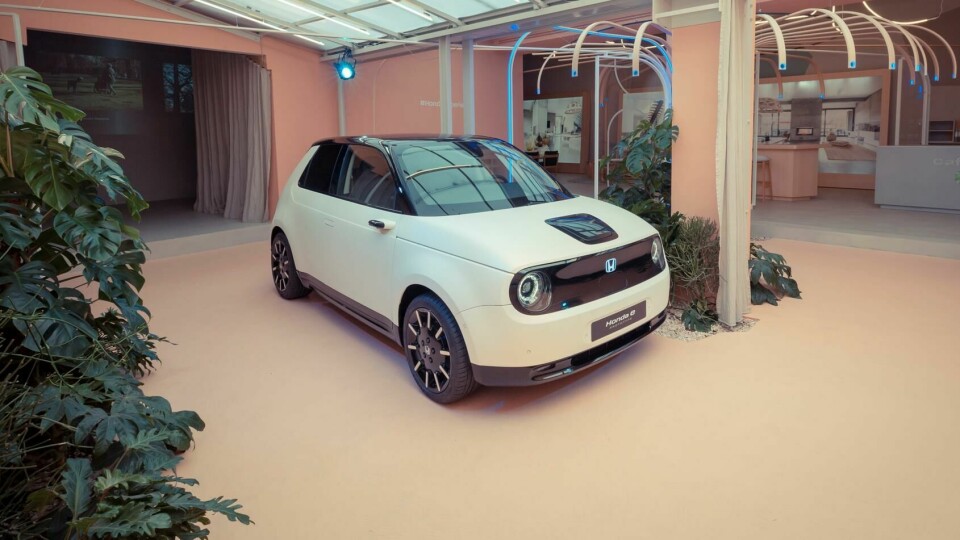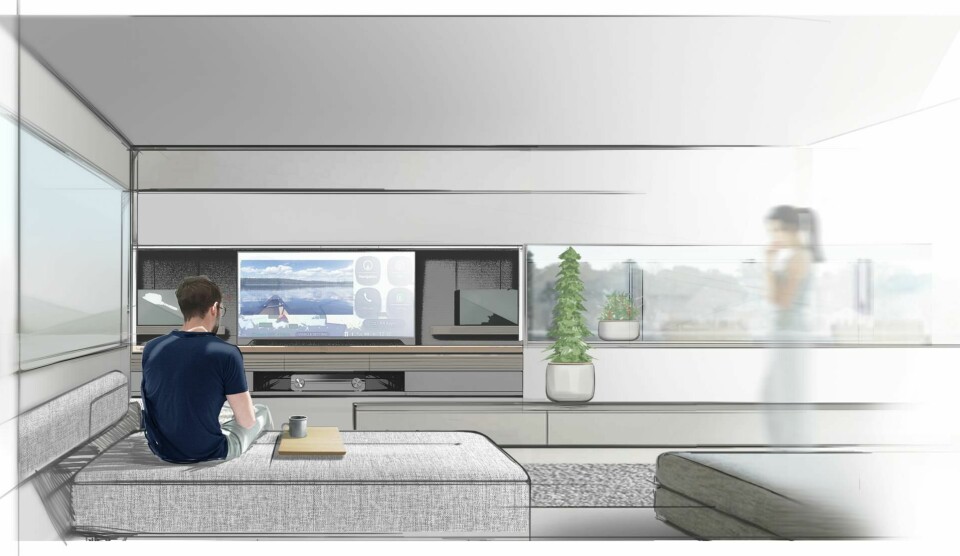
Interior Motives: Honda E
First there was the Urban EV concept, then the e Prototype. Now, we get under the skin of the finished car…
The clean, friendly exterior design of the Honda Urban EV concept unveiled at the 2017 Frankfurt motor show, and its super-simple, calm interior – dominated by a huge infotainment screen, which spanned almost the whole width of the dashboard – were both surprising and impressive. Perhaps even more surprising, however, was the news that the production Honda e itself had been under development well before the concept was unveiled.
“Everybody was anxious, even during development, that the car might not be made, so the concept had a role to play in convincing management and the wider world,” said Kohei Hitomi, project leader for the Honda e Prototype (Geneva motor show, 2019, and then seen again at the Milan Design Week, as pictured above).
After Honda had set out its electromobility vision, the production planning team gave the designers the brief for a small electric city car. Chief interior designer Koichi Tanaka says that the e’s exterior and interior design processes started at about the same time. He explains the chronology further: “The mass-production car planning came first, but the sketch of the concept car was done before the production car’s design freeze.” Sketches for the Urban EV concept are pictured [above, top and below].
‘Premium’, rather than ‘affluent’, consumer lifestyles were investigated, and the theme of ‘seamless life’ was struck upon – in the sense of your car having a similar aesthetic to the lounge of your well-loved but modern house or apartment, so much so it could even act as another room. This idea was reflected in Honda’s exhibit at Milan Design Week, April 2019, where the e Prototype was placed within a calming space to retreat from the urban environment, complete with complementary furnishings. (The production e as seen at the Frankfurt motor show in September was actually very little changed from the Prototype, bar very minor details – it even keeps its rear-view cameras in place of conventional door mirrors).

Given the longer charging times for EVs compared to refuelling with petrol, the idea was to make the car a place where people would feel happy to spend more time. “It’s about quality time, not ‘killing time’,” Tanaka notes. One of the key sketches for the car’s design theme was the rendering of a modern domestic lounge, and this also shows an emphasis on horizontal, rather than vertical, lines – another important theme.
The studies [top, above and right] explore how the overall feeling and impression of the Urban EV’s horizontally-oriented cabin could be expressed in the e, for which the concept’s super-simple, flat front bench and IP had to be translated into production-friendly formats. After driving the Prototype, the interior project leader – whose daily car is a Honda S2000 – realised that the seats needed to hold and support their occupants slightly better than earlier versions had done, given the e’s sprightly performance, so the individual front seats finally signed off were yet more sculpted.
The interior of the production-ready e is dominated by the remarkably wide infotainment screen, made up of an eight-inch driver’s display plus twin 12.3-inch touchscreens within a single oblong frame. Live images from the external cameras are screened to two further six-inch screens angled at each end.
Koichi Tanaka confesses to liking big screens in his own home – his TV is a chunky 55-incher, he says – but emphasises that the point of the e’s large screen is not just to show off its size, but to allow greater content inside of the display and to better serve all of the car’s occupants: “Personally I like a big screen, but this is not a driver-centric design – I wanted the passenger to feel as involved, and make it easier for them to see and work it.”
In terms of the infotainment’s multi-layered content, Tanaka also points to an influence from modern internet-enabled TVs which no longer just show a single moving image, but typically have menu bars along the bottom to reference other channels and sources easily. The screen layout is similarly arranged with touch-sensitive buttons of different sizes on either side of a double screen space; that can show various combinations of information, such as sat nav and music choice, or directions and state of battery charge, within.

Beyond these usual options, the e’s interface also has a personal assistant button, linked to a level of artificial intelligence which can be voice-controlled (SoundHound helped develop the voice recognition software). “At the start of the programme, the personal assistant had a mental age of three,” Tanaka half-jokes. “But the production version is more like a grown-up child.”
Honda collaborated with Panasonic on the screens’ software – “we made them weep with our requests,” Tanaka says, but he seems pleased with the final results, which were also hard to get past Honda’s accounts department. “As you guessed, it was a challenge to approve the big screen and its increased costs,” he adds, “so in order to convince senior management, we decided to create a 3D demo loop to help persuade them. Normally, such content would be static.”
The plan for the production model is that customers will sign up to an internet cloud account, where the personal assistant function can store information and ‘learn’ from previous inputs. Such tech is likely to be featured in future EVs from Honda and, says Koichi Tanaka, should improve within the lifetime of the car rather than be the fastest element to age, currently the case with infotainment software.
Usefully, the dash top also houses separate quick-find switches for the audio, volume and ‘home’ button; the A/C controls in the lower part of the centre console are also physical with fan speed and temperature providing a reassuring ‘click’ when turned. Other functional design touches include a truncated central armrest within which the automatic gearbox buttons are situated, and below that, a cupholder which extends forward horizontally when a smart leatherette loop is pulled. In front of the cupholder are an array of sockets on the centre stack and a soft pocket below to house a large smartphone.
Tanaka says cost was one of the factors in the choice of a resin top surface for the dashboard’s top surface, but also cites its ease of recyclability; and because of the variations of surface possible within the range, a resin part was ultimately easier to make work in terms of fit and finish. The grey marl-style fabric on the seats, supplied by TB Kawishima, is also relevant to the clean, simple and modern vibe overall.


































